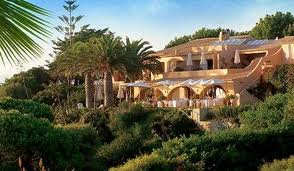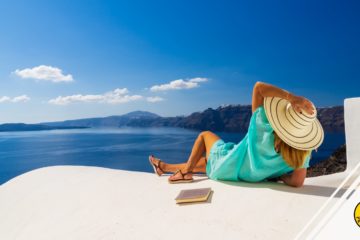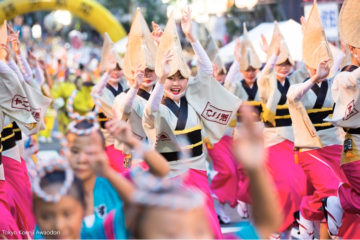Nature lovers seeking a more surreal and sustainable wildlife holiday will be awed by Puerto Rico’s spectacular array of wildlife experiences. Home to 36 nature reserves, 19 state forests, 300 beaches stretched along as many miles of coastline and the only tropical rainforest in the United States National Park System, Puerto Rico offers something for everyone. To coincide with UN World Wildlife Day on 3rd March 2020, which is themed around ‘sustaining life on earth’, Discover Puerto Rico has rounded up some of the best sustainable wildlife experiences on the Island.

Paddle in the World’s Brightest Bioluminescent Bay Puerto Rico is home to three of the world’s five bioluminescent bays; rare ecosystems which occur when the concentration of plankton is high enough to produce a “glow in the dark” effect when stimulated by movement. Plankton can be found throughout the ocean, but it is rare for them to be present in concentrations high enough to be noticeable. To put this in perspective, there must be thousands of these organisms to make a gallon of water light up. Visitors should head to the sparkling waters of Mosquito Bay in Vieques, which boasts the brightest bioluminescent bay in the world, in part thanks to careful preservation efforts which prohibit boats, swimming and discourage the use hand creams, bug repellent and any lotion that could harm the organisms.
Escape to a Tropical Rainforest at El YunqueEl Yunque is the only tropical rainforest in the U.S Forestry System and takes its name from the Taino reference to Yuke, meaning ‘white lands’. Spread across valleys, rivers, waterfalls and hiking trails, the 28,000 acres of rainforest boast a diverse ecosystem, packed with hundreds of unique plant and animal species. A hike through the trails of the rainforest can result in encounters with iconic island animals such as the endangered Puerto Rican parrot and the Coquí frog. The island used to be home to millions of these small frogs but due to deforestation only 17 species remain – some of which are endangered.

Bird-Watching at Cabo Rojo National Wildlife Refuge Located along the southwest coast of Puerto Rico, this National Wildlife Refuge offers dramatic landscapes of salt flats, lagoons, mangroves and protected beaches. Established in 1974, this unique habitat, which measures approximately 1,836 acres, is home to more than 245 plant species and 300 bird species. Many birds find their way to the refuge on their migration between North and South America and the area is considered to be the most important stop over for migratory birds and shorebirds in the Eastern Caribbean. The refuge is also used as a base by scientists conducting research into the protection and preservation of wildlife on the Island. Numerous hiking trails snake their way through the vegetation. Bird lovers will find a wide range of birds, from waterfowl and shorebirds, to pelicans and woodland birds such as the Black-crowned Palm-Tanager and Hispaniola Woodpecker. Some may even be lucky enough to encounter the endangered yellow-shouldered blackbird, La Mariquita de Puerto Rico.
Caving at Cueva Ventana Cueva Ventana, a large cave situated on top of a limestone cliff, has fast become one of Puerto Rico’s most popular natural attractions for visitors and locals alike. Located in the northern region of the Island in Arecibo, the cave offers visitors rare sights such as palaeolith petroglyphs and stone engravings, hiking trails and breath-taking views from the cave’s iconic window-like opening which looks out over the Island’s lush surroundings. Wildlife enthusiasts can sign up to guided hikes led by trained biologists and bilingual environmental experts to learn more about the flora, fauna and the Island’s unique ecosystems. In addition to hearing about how the cave has been shaped over centuries, visitors will witness the vast bat population which inhabits the cave. The cave is completely dark, so wildlife enthusiasts can be reassured that their visit will not impact this fragile ecosystem.
Visit Guánica’s Dry ForestThe Bosque Seco de Guánica, a United Nations International Biosphere Reserve, is one of the most extensive tropical coastal forests in the world. Barely touched by rainfall all year, the 9000 acres of land provide an extreme contrast to the El Yunque rainforest, despite being only two hours apart. This slice of paradise is home to hundreds of species of endangered animals, plants and marine life including an impressive 130 different types of birds such as the Guabairo, Palometa and the Brown Pelican. Flora is divided into the deciduous, evergreen and thorny categories, whilst the coastal zone includes mangroves and many other species.
The reserve features 12 different trails to choose from, with varying degrees of difficulty. The longest, but most popular, is a historic fort known as Fuerte Capron and offers visitors the sweeping sound of birdsong and panoramic views.
Whale watching on the West Coast Visitors can catch sight of the magnificent Humpback Whale in Puerto Rico when huge colonies migrate from the North Atlantic Sea to the warmer waters of the western coast of the Island to mate and breed. In Rincón, visitors can join a sunset whale-watching cruise with Taino Divers or catch a glimpse from the Punta Higüero Lighthouse, where whales often swim within 100 yards of the coast. At Mona passage, advanced divers can embark on a unique scuba diving experience with Cabo Rojo Adventures Tourmarine, swimming alongside whales, dolphins, sharks and turtles in Puerto Rico’s diverse reefs, caves and marine trenches.
For more information: www.discoverpuertorico.com














